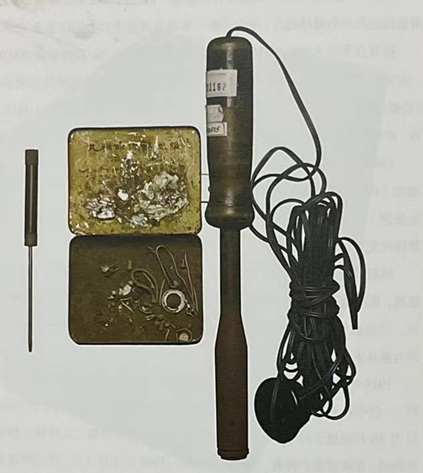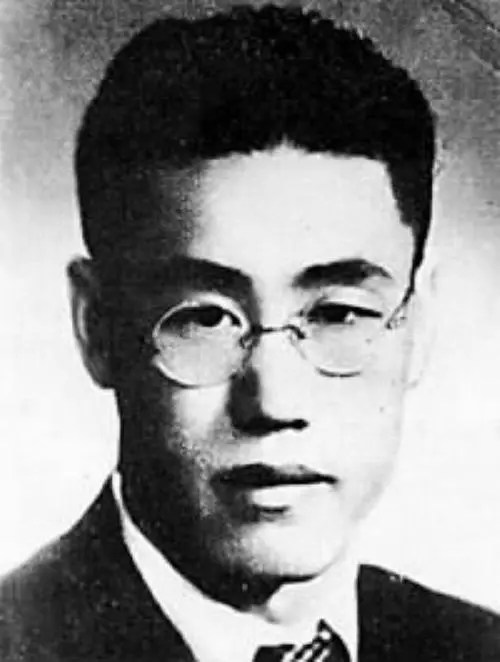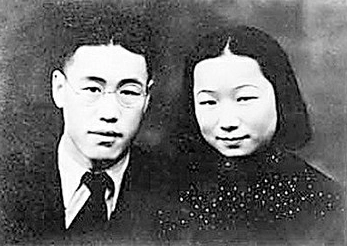编者按:时值建党百年,为实现党建联动区域化、促进党史教育机制化,上海外国语大学与上海龙华烈士陵园举办签约共建仪式,开展建党百年专题活动,引导广大青年在学思践悟中传颂先辈故事、坚定理想信念。上外英院龙陵青年志愿服务队从译介角度进行实践,讲演中国共产党人的革命故事,积极推广文化译介新理念,助力红色文化“走出去”。
朗读者:2020级本科生 张慧琳

图为20世纪40年代秦鸿钧修发报机的工具
这是20世纪40年代秦鸿钧修发报机使用的工具,包括旋凿、电烙铁、焊锡盒。其中旋凿为金属质地,电烙铁由烙铁和木质手柄两部分组成,焊锡盒由药盒改装而成。
This set of tools from the 1940s was used by Qin Hongjun to repair telegraph transmitters. There is a turn screw made of metal, an electric soldering iron with a wooden handle, and a soldering tin box that was used to be a pill box.

图为秦鸿钧像
秦鸿钧(1911—1949),山东沂南人。1927年加入中国共产党。参加过莒沂农民暴动。1932年成为中共沂南地区主要领导人之一。1936年赴莫斯科学习电讯技术。回国后负责在上海、哈尔滨设立电台。1940年在上海设立秘密电台并任报务员,多次往返上海和苏北解放区,连接上海与解放区的电台通讯。
Qin Hongjun (1911-1949), a native of Yinan, Shandong, joined the Communist Party of China in 1927. A participant of the peasant riot in Juyi, he became one of the main leaders of the party in Yinan in 1932. In 1936, he went to Moscow to study telecommunication. After returning to China, he was responsible for setting up radio stations in Shanghai and Harbin. In 1940, he established a secret radio station in Shanghai and served as the telegraph operator. At that time, he traveled between Shanghai and the liberated areas of the northern part of Jiangsu many times to connect radio communications.

图为莒沂县抗日民主政府旧址
秦鸿钧是一名出色的交通联络者。1937年,党根据城市地下工作的需要,派秦鸿钧到上海建立一座秘密电台。每当夜深人静,人们都在熟睡时,正是秦鸿钧集中精力工作之时。
Qin was an excellent transportation liaison. In 1937, the party assigned him to Shanghai to establish a secret radio station to facilitate the underground work there. In the still of night, when others were sleeping, Qin was fully absorbed in his work.
抗日战争胜利后,国民党一方面高唱和平建国的高调,另一方面加强对人民的严密控制,白色恐怖又重新笼罩上海。国民党在上海还建立了严密的侦控系统,对中国共产党的地下电台加强了侦察。这样,秦鸿钧工作就更加艰难了。
After the victory of the War of Resistance Against Japanese Aggression, the Kuomintang (KMT), while advocating a peaceful founding of the country, was secretly tightening up its control over the people, initiating another round of violence against communists, also known as the "White Terror". The KMT's effort included more rigorous scrutiny and detection of the communist radio stations in Shanghai, which made Qin's work even more difficult than before.
1947年年底,国民党反动派的白色恐怖愈演愈烈,秦鸿钧除了要排除机器破旧而造成的故障外,还必须不时地排除反动军警、特务的侦察干扰。低矮狭小的阁楼是他的战斗阵地,收发报机则是他手中的武器。每当机件发生故障,秦鸿钧自己动手,使用旋凿、电烙铁和焊锡盒等工具来排除故障,直至电台接通,将一封封重要情报发给党中央。这些检修工具曾起到保障秘密电台正常运行的作用,是秦鸿钧从事革命活动的见证物。
At the end of 1947, the "White Terror" intensified. In addition to eliminating malfunctions caused by worn-out machines, Qin had to find ways to avoid the reconnaissance interference of the military police and the KMT spies. The low and narrow attic was his battle position, and the transceiver was his weapon. The maintenance tools we see in the picture once played an indispensable role in ensuring the operation of the secret radio station.
1949年3月17日深夜11时,十几个特务破门而入,阁楼上的秦鸿钧立即发出最后一组电文,并通知对方停止发报。接着就以最快的速度拆毁了机器,烧毁了刚收下的电文,然而秦鸿钧及妻子还是被国民党逮捕了。1949年5月7日深夜,秦鸿钧被敌人押到浦东戚家庙附近秘密杀害。
At 11 p.m. on March 17, 1949, a dozen spies broke into the house. Qin immediately sent the last set of messages, which ended with his warning to the comrade on the other end. Then he demolished the machine as quickly as possible, and burned the message he had just received. The KMT arrested Qin and his wife that evening. In the dead of the night on May 7 of the same year, Qin was secretly killed near Qijiamiao in Pudong.

图为秦鸿钧与妻子韩慧如合影
1996年,秦鸿钧的妻子将秦鸿钧生前在上海检修收发报机时使用过的旋凿、电烙铁和焊锡盒捐赠给上海市龙华烈士陵园。这份珍贵的检修工具彰显着秦鸿钧烈士生前在十分恶劣的工作环境中,一直保持着坚定的革命信念。
In 1996, Qin's wife donated the set of tools, a witness to Qin's firm revolutionary conviction, to the Longhua Martyrs Cemetery.
(中文作者:马振宇)
我要评论 (网友评论仅供其表达个人看法,并不表明本站同意其观点或证实其描述)
全部评论 ( 条)